Crossing the Atlantic by private jet
Although many private jet charter flights are used for shorter hops, private transatlantic flights offer the ultimate in privacy, flexibility and comfort for a longer trip.
There are many reasons that clients would choose a private flight across the Atlantic. Sometimes it can be in an emergency, when someone needs to fly quickly. Or we will often arrange a private charter for a group flying together - for an event, a multi-leg itinerary, or a corporate or family flight.

For private jet pricing for any transatlantic trip contact us or call {{telephone}} (24 hours)
Here are some of the FAQs that we are often asked about crossing the Atlantic by private jet – from the fastest aircraft, avoiding jet lag, and some insider tips from the pilots in our team.
- What are the most popular private jet routes?
- How long does it take to fly across the Atlantic by private jet?
- How much does it cost to fly across the Atlantic by private jet?
- Which airports are the most popular for transatlantic flights?
- How does the wind & weather affect my flight time?
- How do flight permits work for Atlantic, long-haul flights?
- Can I take my pet with me when crossing the Atlantic by private jet?
- Can I get an empty leg private jet flight across the Atlantic?
- Which private jets are most popular for crossing the Atlantic?
- What can I look out for en route across the Atlantic?
- How do pilots plan transatlantic flights routes?
- Can I avoid jet lag on long haul private jet trips?
- How does immigration work for transatlantic private jet flights?
- How many pilots will there be on a transatlantic private flight?
- Will there be turbulence on a transatlantic private flight?
What are the most popular transatlantic private flight routes?
No two flights are the same, and private jet travel allows A to B travel for any route. But some of the more popular transatlantic routes we arrange are from Miami to London; Paris to New York; Los Angeles to Geneva & Nice to Toronto.
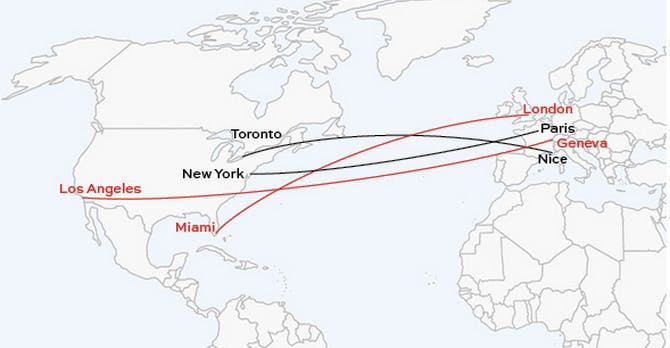
How long does it take to fly across the Atlantic by private jet?
Actually crossing the Atlantic Ocean itself is only part of the flight (a pure Atlantic crossing would be Shannon to Gander, which can take as little as 3.5 hours). But then if you were flying onto Miami for example, it could be another 4 hours of flying time. The flight time depends on the route and the speed of the aircraft that you choose.
London to New York takes around 6 - 7 hours in a Global 5000; Los Angeles to Geneva takes 10.5 hours in a Gulfstream G650; Paris to Miami by private jet would take 8.5 hours in a Falcon 7X.
How much does it cost to fly across the Atlantic by private jet?
Private jet pricing is based on the aircraft type and the flight time. PrivateFly compares multiple options for the best price and aircraft availability for each flight, but here are some examples for non-stop flights:
New York to London by private jet
Aircraft: Global Express (seats 14)
Flight time: 6 hrs 30 min
Example price: $71,500 (one-way)
Paris to Miami by private jet
Aircraft: Falcon 7X (seats 13)
Flight time: 8 hrs 55 min
Example price: €114,000 (one-way)
For private jet pricing on any transatlantic itinerary, call {{telephone}} (24hrs) or contact us.
Which airports are the most popular for transatlantic flights?
Private jets can use many more airports than scheduled airlines. Choosing the best private jet airport for a transatlantic trip depends on factors including runway length (to allow long range jets to take off and land); opening hours; proximity; and immigration services. PrivateFly’s flight team can advise on the most suitable airport choices to best fit with each flight requirement.
How does the wind and weather affect my flight time?
Timing of the flight will differ due to weather diversions, tailwinds and headwinds. This can make a difference of an hour or more for some flight routes. Weather also affects fuel burn which pilots need to plan around. Because transatlantic flights are longer, the weather on arrival can change considerably during the flight, especially during the winter months. So pilots are monitoring changes in weather forecast throughout the trip. How wind affects flight times

How do flight permits work for transatlantic, long haul flights?
PrivateFly arranges any flight permits that are required for passengers travelling across the Atlantic, but this process is swift and does not usually add any delay to flight planning, even for flights at short notice. But on weekends there are more limitations. US registered aircraft, for example, cannot perform a short notice flight to the UK on a Sunday as the CAA office is closed so cannot grant permits.
Can I take my pet with me on a transatlantic private flight?
We have many pet-owners wishing to travel by private flight with their animals. For transatlantic flights, this can be when people are relocating or travelling for longer periods, and they would like their pet to travel in the cabin alongside them. Providing all pet documentation is up to date, we can make all the arrangements for your pet to travel with you on transatlantic flights. Flying with pets by private jet.
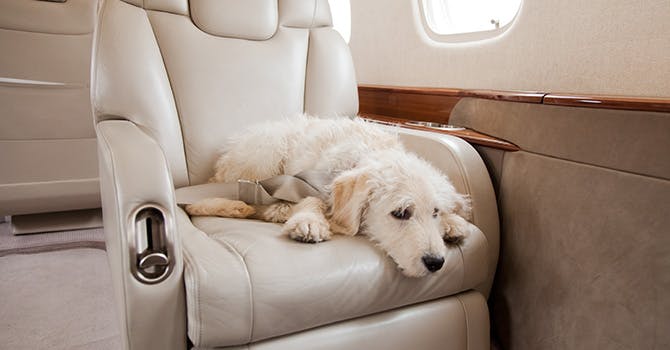
Can I get an empty leg flight for a transatlantic private flight?
Yes, private jet empty legs (one-way flights when the aircraft is returning or repositioning empty) are sometimes available across the Atlantic. They can offer discounts of up to 75% for one-way flights at short notice. For latest empty legs download the PrivateFly app.
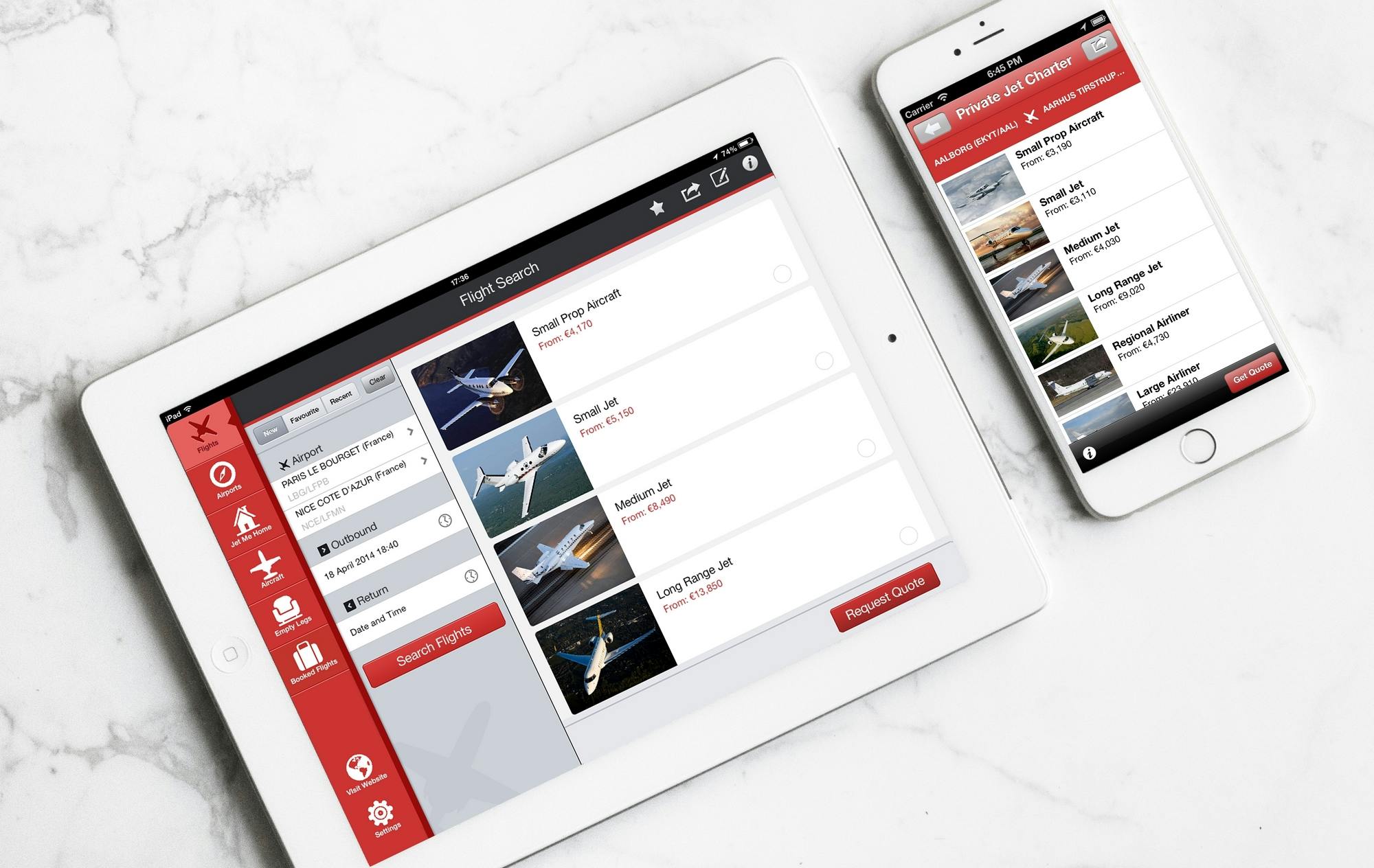
Which private jets are most popular for flights across the Atlantic?
In some cases, clients may choose to refuel, but for many the ideal flight is the fastest and most direct non-stop flight across the Atlantic – and there are number of private aircraft types that can do this.
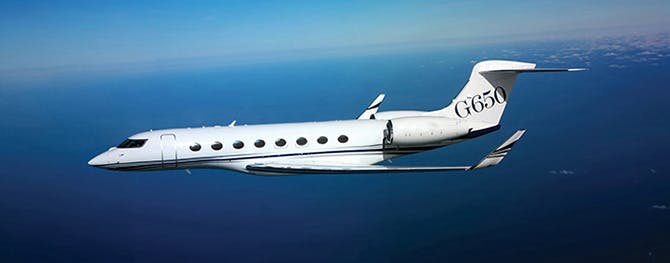
The Gulfstream G650ER is one of the fastest and longest-range private jets with a range of 7500 nm. It can cross the Atlantic on any route comfortably (and very quickly) at a speed of 0.85 mach.
Bombardier’s Global family are also regular transatlantic choices, with the Global 7500 now outflying Gulfstream G650ER, and other Globals, such as the 600, 500 and Global Express also capable of many nonstop routes across the Atlantic.
Dassault’s Falcon 7X and 8X are also popular choices, with a similar range.
What can I look out for en route across the Atlantic?
Although there’s a large expanse of ocean beneath you, there are still some exciting views from your private jet window. When your flight takes the northerly track from Europe to the Midwest of the USA, you might be lucky enough to get a great view of Greenland.
Parallel crossings are also a great visual sight when crossing the Atlantic by private jet. You might see planes crossing in parallel, especially seeing the lights of other aircraft at night.
How do pilots plan transatlantic private jet routes?
When flying across the Atlantic, aircraft use routes called North Atlantic tracks, which change position according to weather conditions. The best route will be planned according to a number of factors including destination, aircraft weight, weather and Air Traffic routes. Reducing flight time and fuel burn is the key objective for most transatlantic flight routes.
Can I avoid jet lag on long haul private jet flights?
Jet lag is difficult to avoid completely when flying across time zones, even on a private jet. But some of the most advanced private jets, such as the latest Gulfstream models, have cabin management systems which feature 100% fresh air and altitude restrictions to ease jet lag effects.
A top tip from pilots is to try and get in the time zone before you leave. It is all about sleep, which is something that private jet travel allows in optimal comfort. Many of our clients will use the flatbeds on board long range jets, to be fully-rested on arrival. And with many private jet airports being 24 hours, schedules can be made (and altered) to work around any itinerary. Which private jets have flatbeds?
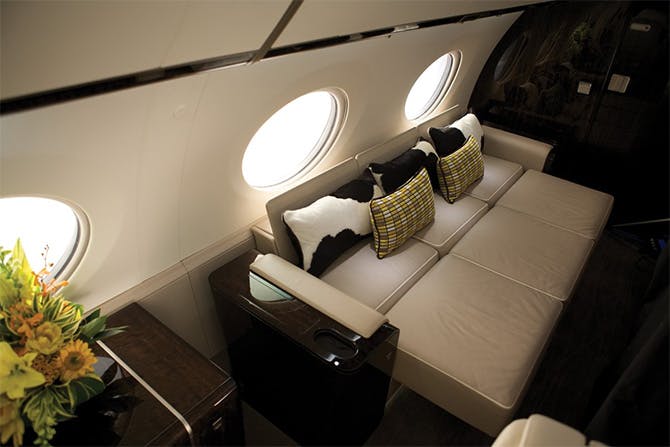
How does immigration work for transatlantic private jet flights?
An airport of entry (AOE) is an airport that provides customer and immigration services. Customs and immigration is only required upon arrival and the process for private jet flights is fast and seamless. But not all airports have customs and immigration, so this can affect your choice of arrival airport.
All international airports will have immigration services, as do larger business aviation airports (such as New York Teterboro, Van Nuys, White Plains and Miami Opa Locka). Others have a dedicated ramp for customs, where aircraft will park (while a customs officer will board to check passports) before moving across to the FBO for the passengers to disembark.
How many pilots will there be on a transatlantic private jet flight?
On private jet flights across the Atlantic, as well as a Captain and Co-pilot, there will also be an additional pilot. This is a requirement that also means the other pilots can take turns to rest on non-stop long haul flights. This also allows more flexibility around crew duty restrictions, which limit the time that pilots can fly without a crew change.
Will there be turbulence on a private jet flight across the Atlantic?
There is often some level of turbulence on any flight across the Atlantic, due to the jet streams across the ocean. Private jets cannot avoid turbulence altogether, but the crew will be very experienced at handling it, and pilots will often communicate with each other offering ‘ride reports’ about the best track and altitude to fly for the smoothest ride. (Pilot-speak for checking on turbulence is ‘How’s the ride?’)
For pricing or more information on transatlantic private jet flights contact us or call the PrivateFly team 24/7 on {{telephone}}.


